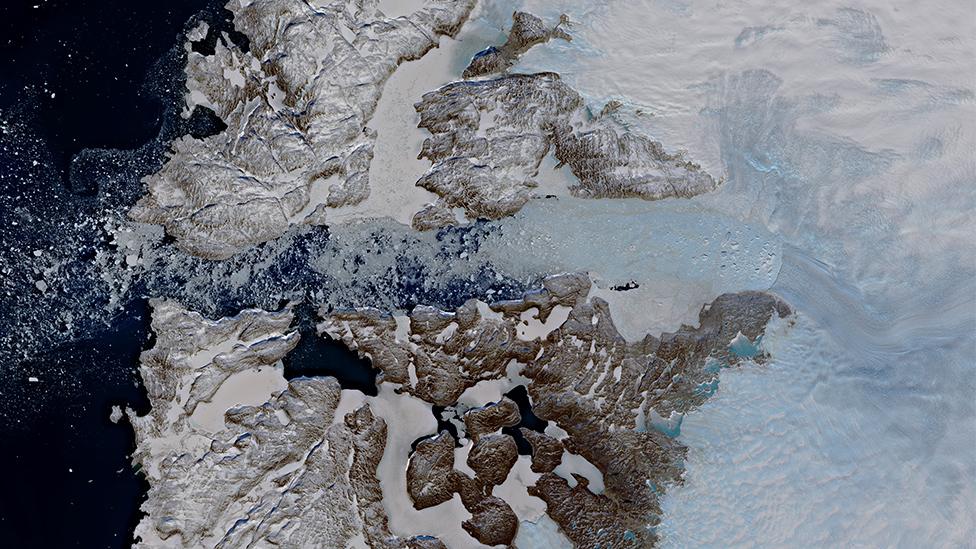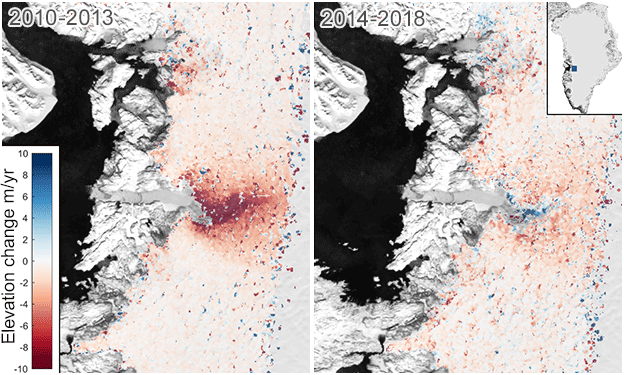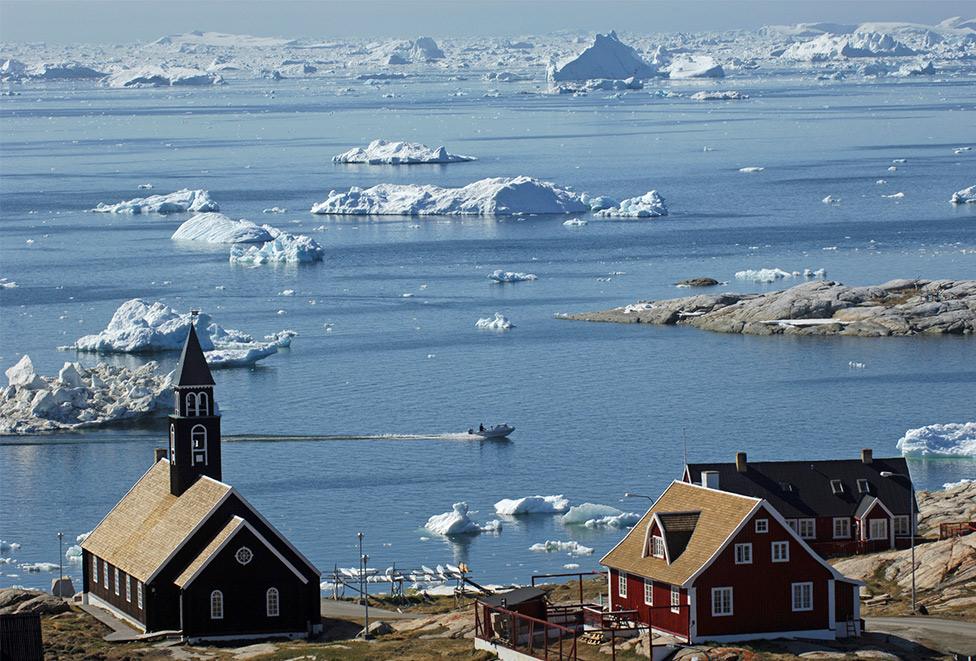Jakobshavn Isbrae: Mighty Greenland glacier slams on brakes
- Published

Jakobshavn in April this year: The glacier is an important drainage outlet for the Greenland Ice Sheet
European satellites have detailed the abrupt change in behaviour of one of Greenland's most important glaciers.
In the 2000s, Jakobshavn Isbrae was the fastest flowing ice stream on the island, travelling at 17km a year.
As it sped to the ocean, its front end also retreated and thinned, dropping in height by as much as 20m year.
But now it's all change. Jakobshavn is travelling much more slowly, and its trunk has even begun to thicken and lengthen.
"It's a complete reversal in behaviour and it wasn't predicted," said Dr Anna Hogg from Leeds University and the UK Centre for Polar Observation and Modelling (CPOM).
"The question now is: what's next for Jakobshavn? Is this just a pause, or is it a switch-off of the dynamic thinning we've seen previously?"

Change in height: There was a marked change after 2013
The glacier is sited in southwest Greenland. It's famous for its spectacular production of icebergs - colossal blocks calve from its terminus and drift down its fjord, out into Disko Bay and onwards to the North Atlantic.
More than likely, it was Jakobshavn that spawned the iceberg that sank the Titanic.
Scientists' interest in the glacier lies in its role as a drainage outlet for the Greenland Ice Sheet. It's a key channel for the export of ice that can then raise global sea levels.
Allow YouTube content?
This article contains content provided by Google YouTube. We ask for your permission before anything is loaded, as they may be using cookies and other technologies. You may want to read Google’s cookie policy, external and privacy policy, external before accepting. To view this content choose ‘accept and continue’.
The rapid flow, thinning and retreat of Jakobshavn's front end in the mid to late 2000s were probably driven by warm ocean water from Disko Bay getting into the fjord and attacking the glacier from below.
The phase change, scientists think, may be related to very cold weather in 2013. This would have resulted in less meltwater coming off the glacier, which in turn might have choked the mechanism that pulls warm ocean water towards Jakobshavn.
"Fjord overturning, the circulation that draws warm ocean water in from Disko Bay to melt the glacier at its base is, in part, forced by surface melting on the Greenland Ice Sheet. If you don't get a lot of fresh, cold meltwater going into the fjord, this circulation is weaker," said Dr Hogg.

Large numbers of icebergs head out of the fjord into Disko Bay and on to the Atlantic
The Leeds researcher has been using a suite of European satellites to monitor Jakobshavn, including the EU's Sentinels 1 and 2 and the German national TerraSAR-X mission.
Another useful tool has been the radar altimeter on the European Space Agency's Cryosat platform.
This has a very high-resolution "swath" mode that has allowed Dr Hogg to track elevation changes on the glacier's narrow trunk.
Where previously this was dropping in height by 20m a year, it's now thickening by 20m a year.
"All this is a reminder of how unpredictable glaciers can be," she told BBC News. "We didn't predict this change in behaviour, and if Jakobshavn does start thinning and retreating again - we can't predict when that will happen.
"The rate of sea-level contribution from Greenland has slowed in recent years and it's because some of the biggest ice evacuators like Jakobshavn aren't contributing as much as they used to."
Dr Hogg was speaking here at the Esa's Living Planet Symposium, external, Europe's largest Earth observation conference.